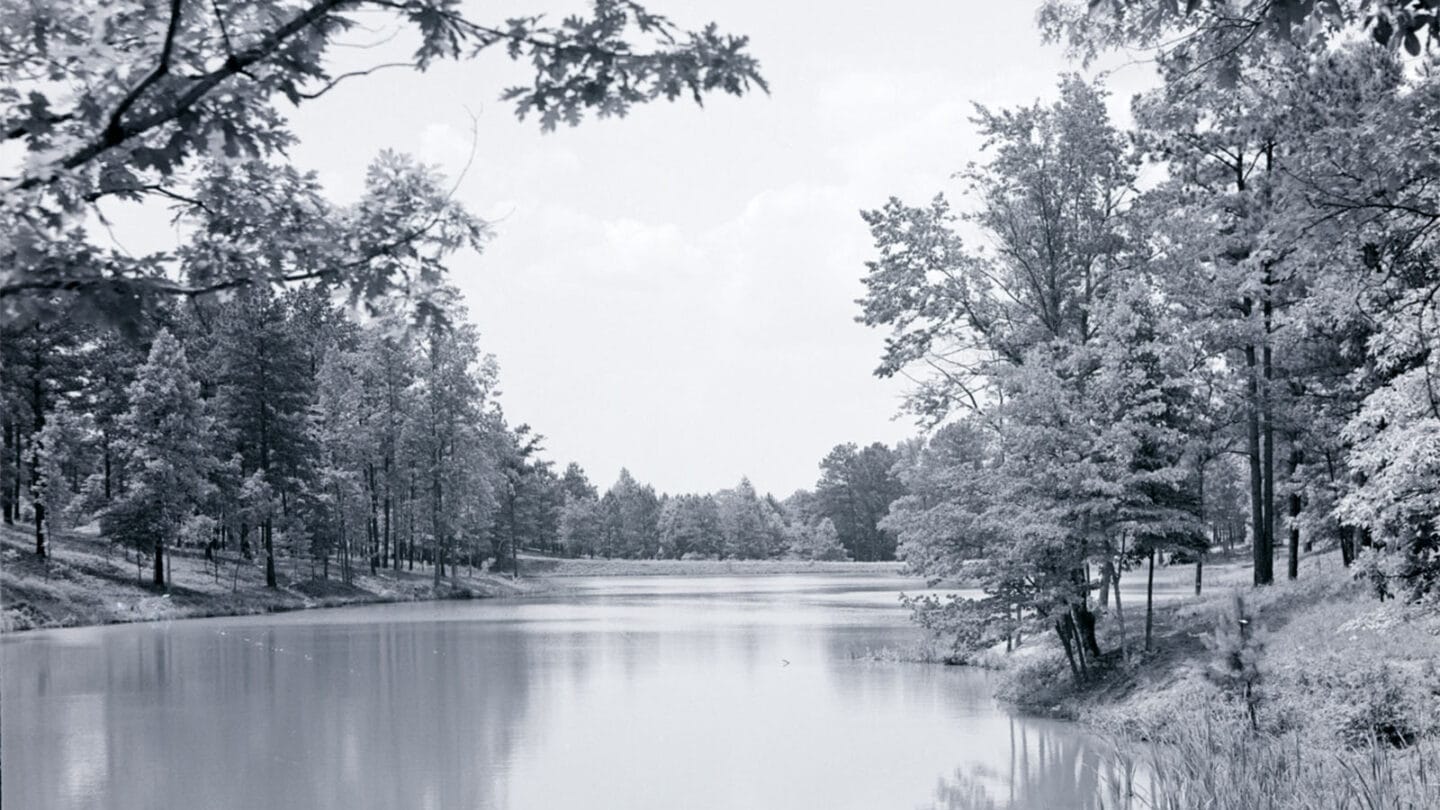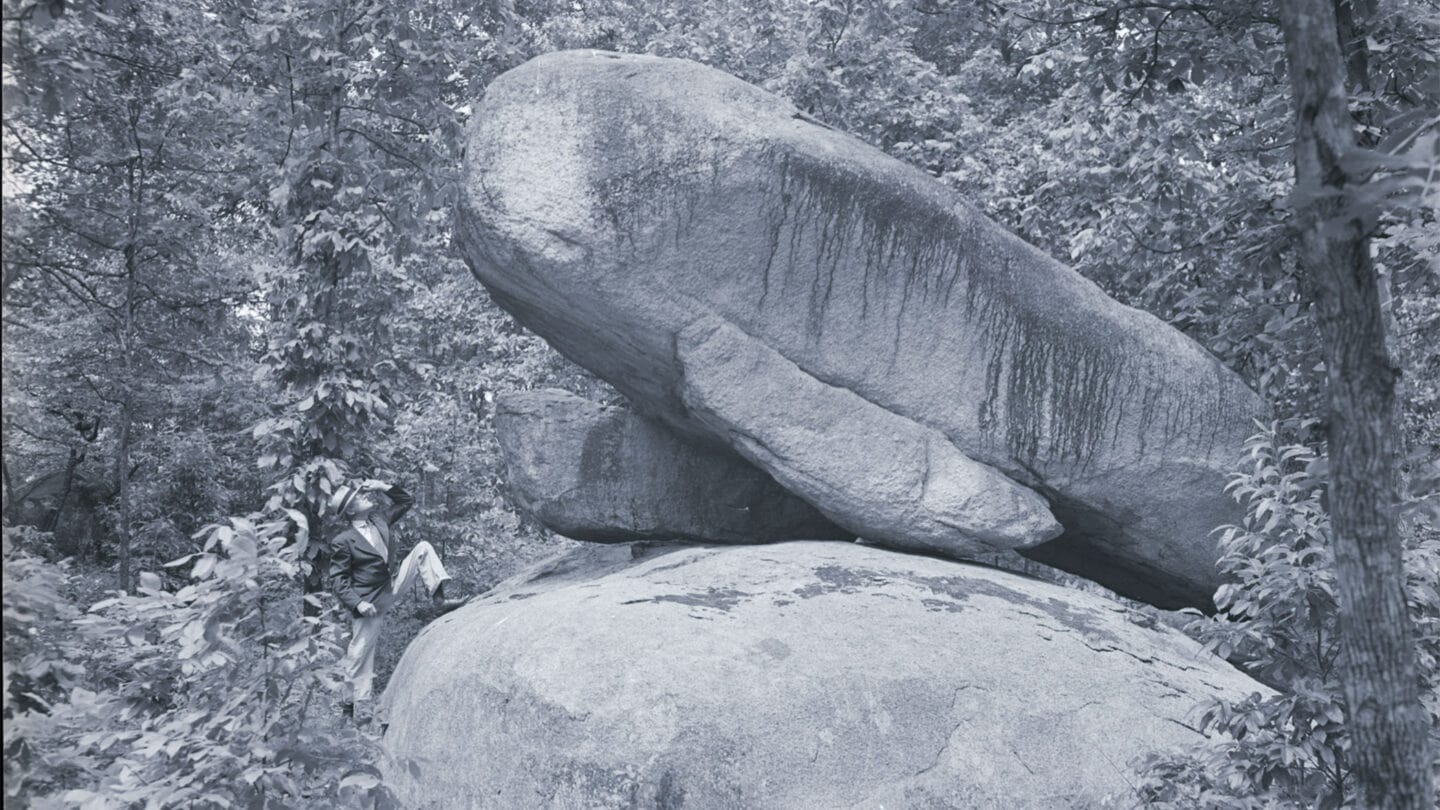
Fulton County Botanical Garden lake, Atlanta, Georgia, May 1946. VIS 82, Kenneth Rogers Photograph Collection, Kenan Research Center at Atlanta History Center
Processing manuscript collections for the Cherokee Garden Library can lead to amazing discoveries. Such was the case with the Elizabeth Meriwether records of the Fulton County Botanical Garden Commission (MSS 10f). This small collection of correspondence and memoranda documents the commission’s goal to oversee a botanical garden for Atlanta in the 1940s. This fascinating collection, as well as other collection materials, helps bring to life an important history of the first botanical garden for Atlanta.
In the late 1930s, the initial idea to create a botanical garden for Atlanta was proposed and supported by several Atlanta groups including the Atlanta Federation of Women’s Clubs, the West End Businessmen’s Association, and the Georgia Botanical Society. In 1938, Fulton County allocated 459 acres of undeveloped land in the vicinity of what is now known as Bakers Ferry Road SW, Martin Luther King Jr. Drive SW, and Fulton Industrial Boulevard SW. The botanical garden, already home to hundreds of native species, was to be used for recreation, educational, and conservation purposes. Due to segregationist Jim Crow laws of the time, this garden was likely segregated. Numerous newspaper articles from the Archives’ Subject Files describe the city’s excitement of being the future home to the largest botanical garden in the Southeast.
County Commissioner Troy Chastain oversaw the early stages of development of the botanical garden, along with Claude Mills, Superintendent of the garden; Eugene S. Heath, President of the Georgia Botanical Society, hired in 1940 to survey the property; and William L. Monroe, Sr., owner of Monroe’s Landscape and Nursery Company. The Fulton County Garden Commission was formed in 1946 to oversee the garden with Roberta P. Little (1871–1947) serving as Chairman of the commission from 1946 until her death in 1947. Her daughter Elizabeth “Betty” Meriwether (1905–2000) served as President of the commission in 1952 after serving as Secretary to the commission.

Surveyor Eugene S. Heath atop boulders at Fulton County Botanical Garden, Atlanta, Georgia, May 1946. VIS 82, Kenneth Rogers Photograph Collection, Kenan Research Center at Atlanta History Center
The Works Progress Administration provided additional funding and manual labor for the project. Typical of this time, convict labor was used to construct the man-made stocked lake which was opened to whites for fishing in 1945. The restored Clem Greene plantation home served as headquarters for the garden staff. The records of the Georgia Botanical Society collection (MSS 979) provide detailed plans for trial and experimental gardens, economic, formal, water, rose, azalea, and kitchen gardens, as well as a pharmacy medicinal garden. Bridal paths were laid, and hundreds of plants and trees were added through donation and purchase. School groups, garden clubs, botanists, fishermen, and outdoor enthusiasts visited the garden for education and recreation. In 1945, part of the garden was dedicated to Atlanta servicemen and women and was known as the Memorial Forest.
Although maps from the Archives Map Collection indicate the garden as recently as 1954 and materials from the Atlanta Regional Commission Collection also show interest in maintaining the area as a public park into the mid-1950s, plans for the botanical garden were never finalized, and the Fulton County Botanical Commission was disbanded in 1952. Several factors may have contributed to the garden’s closing, such as the growth and expansion of Atlanta, the opening of the Fulton County Airport-Brown Field, as well as the development of the Fulton County Industrial District in the same area. Despite the botanical garden’s failure, these valuable collections continue to help document early environmental interests and garden preservation efforts in Atlanta’s history.
Learn more about Fulton County’s original botanical garden at Cherokee Garden Library, located in Kenan Research Center at Atlanta History Center. We have over 32,000 books, photographs, manuscripts, seed catalogs, and landscape drawings in our collection. For more information about Cherokee Garden Library, please contact Garden Library Director, Staci Catron, at 404.814.4046 or scatron@atlantahistorycenter.com.


